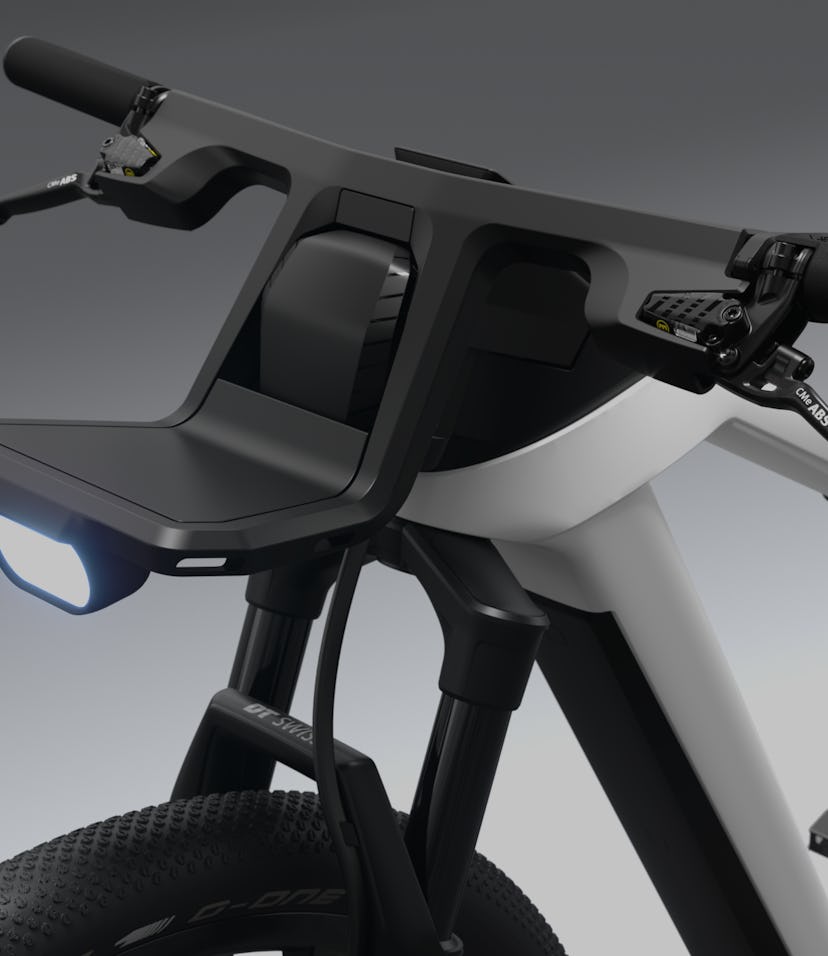Design
Bosch's 'Design Vision' concept makes today's electric bikes look pedestrian
Too bad you'll never get your hands on it.

If you're not deep in the world of electric bikes, you might not know that Bosch, the company that makes power tools, is one of the leading producers of motors for electric mid-drive bikes. That big lump you see on the bottom of expensive e-bikes? Probably a Bosch.
In fact, Bosch has been making these e-bike drive systems for 10 years, and to commemorate the occasion, the German company has unveiled a very futuristic concept bike that it calls its "eBike Design Vision." This is what Bosch envisions the future of electric bikes to be: integrated, sleek, and, presumably, expensive.
As is often the case with concept designs, Bosch is using the Design Vision bike to demonstrate the ideal use case for the individual components that it offers to the third-party bike manufacturers that make real-world commercial bikes. The first and arguably most important bit is the motor that powers the bike. Here Bosch is highlighting its Performance Line CX motor, which is aimed at mountain and trail riders and offers the most torque of all of its mid-drive motors.
The other main component is the new PowerTube 625 battery which, as the name might suggest, packs 625 watt-hours of energy. These Bosch mid-drive bikes are designed to conform to the (lame) European electric bike legislation that prohibits the super-fast throttle bikes we can enjoy here in the U.S., so 625 watt-hours is actually quite good for bikes that are almost exclusively pedal-assist. Anyway, stepping down from my very high (and very fast) American high horse for a moment, these batteries are designed to fit snugly into Concept Vision's downtube, giving the bike a sleek silhouette without any unsightly battery humps.
Bosch is also touting its Nyon onboard computer. Compared to what you typically get on an ebike, this thing is like going from Windows Mobile to an iPhone circa 2010. It can provide turn-by-turn directions, fitness data, and metrics about the remaining range in your battery. Normally the Nyon is a handlebar-mounted dingle, but here on the Concept Vision it's built into what Bosch calls the "fully integrated cockpit." How's that for aspirational?
Finally we get to the real star of the show, the design of the bike itself. Bosch touts the Design Vision as having a full carbon frame, and it's cool to see the sloping top bar that descends down past the long seat post all the way down the rear wheel. Speaking of the wheels, I love the large, presumably carbon spokes that are used here. I mean, this is undoubtedly a render of a bike that doesn't exist, but we can still call it carbon just for funsies.
Moving on, we have a very attractive matte black front fork with ample suspension, and if you've read my Vanmoof review, you know that's a must for me here on New York City's apocalyptic streets. From there we can see a very modern, tightly integrated headlamp and basket mount, and that's really the theme running throughout the industrial design of the bike; air-tight integration, almost exceeding the level of integration you might see in a production car. I can only spot one wire, and even then it's neatly bundled and tucked away.
Since this is a concept bike, it's likely that we'll never see it. That said, this is a signal to Bosch's customers, the third-party bike manufacturers, that this is the high watermark. The Bosch Design Vision is meant to lift us past the status quo, which can be basically summed up as retro-themed bikes like the Vanmoof and bikes from companies like Cannondale, which have very traditional silhouettes. At the same time, the Design Vision is more grounded in reality than the Trefecta, but still achieves a hypermodern look.